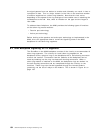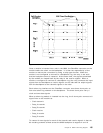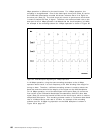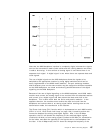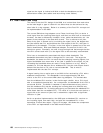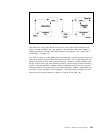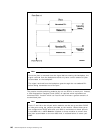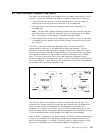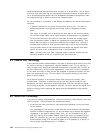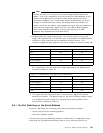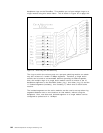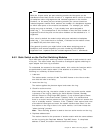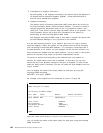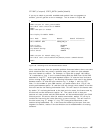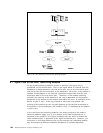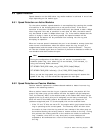
wideband/wideband configuration when the port is in trunk mode. This is done
to ensure that when the ring is reconfigured outside the module, a signal with a
lot of accumulated jitter does not hit a wideband/narrowband configuration until
it has gone through a JADC to remove the excessive jitter.
So, the following is a summary of the differences between the active and passive
modules.
•
A passive module has no active re-timing from port to port. The data is
passed sequentially through the ports using relays to bypasses unused
ports.
•
The signal is re-timed and re-amplified for each port on the active modules.
This allows longer lobes and a higher number of stations per ring segment.
•
On the active modules, the DPLL on each port converts the analog signal
from the external station to digital for transmission to the backplane. This
means that the signal on the active modules are in digital form, making it
economically possible to offer per-port switching on the active modules by
using a switch fabric on the module that can switch the signals from each
port to any one of the 10 backplane rings on the ShuntBus.
Note: Currently, the Dual Fiber Repeater module and the 18-port per-port
switching modules allow you to perform per-port switching.
8.5 Passive Port Technology
In the passive module implementation, the data is switched from port to port with
no active re-timing or regenerative element between ports. This is done by a
relay on each port. Data from attached workstations is passed from one port to
the next without any re-timing and regeneration. Note that if a port is disabled
or not used, the relay on that port will be wrapped to prevent the station on that
port from entering the ring. This will result in the signal flowing to the active
ports on each module.
On a passive module, as the signal moves from one port to another, jitter
accumulated. Therefore, to pass the signal from the passive module to the
backplane, we must remove the accumulated jitter and also convert the signal
from analog to digital. In the opposite direction, we must convert the signal from
digital to analog, before passing the signal from the backplane to the passive
module.
8.6 Active Port Technology
In the active module implementation, each port contains a Dual Phase Lock Loop
(DPLL) function. DPLL performs the following functions:
1. It removes the jitter received on each port before passing it to the next port
on the module.
The advantage of this function is that with the active modules, the maximum
number of stations supported on a 4 and 16 Mbps ring is always 250 stations
regardless of the type of cabling used. Also, you are allowed to mix UTP
and STP cabling on the same module and/or the same ring segment of the
8260. For example, you can mix up to 250 stations connected to the 8260
active modules using STP and various types of UTP (category 3, 4 and 5) to
form a single ring operating at 4 or 16 Mbps.
142 8260 Multiprotocol Intelligent Switching Hub



